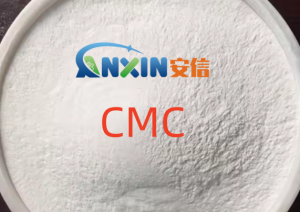Carboxymethylcellulose sodium (CMC-Na), a key water-soluble anionic cellulose derivative, is widely used in the pharmaceutical industry due to its excellent biocompatibility, low toxicity, chemical stability, and multifunctional properties. Compared to industrial-grade and food-grade products, pharmaceutical-grade CMC has stricter requirements for purity, viscosity control, degree of substitution, heavy metal content, and microbial limits to ensure its safety and efficacy in pharmaceutical formulations. With the advancement of modern pharmaceutical technology, the market application of pharmaceutical-grade CMC is becoming increasingly diversified and high-end.
1. Main Applications of Pharmaceutical-Grade CMC
1.1. Tablet and Capsule Excipients
CMC, as a common tablet binder and disintegrant, effectively improves the binding force of drug particles, ensuring firm tablet formation and controllable disintegration time. CMC is also used as the shell material for hard and soft capsules, enhancing their stability and dissolution properties.
1.2. Stabilizers for Pharmaceutical Suspensions and Suspensions
In oral suspensions and antibiotic preparations, CMC acts as a thickener and suspending agent, preventing solid particle settling, maintaining formulation uniformity, and improving mouthfeel and flowability.
1.3. Ophthalmic Preparations
Pharmaceutical-grade CMC is widely used in artificial tears and eye drops. Its excellent moisturizing and adhesive properties lubricate the corneal surface, relieve dry eye symptoms, and increase drug retention in the eye, thereby enhancing efficacy.
1.4. Topical and Transdermal Preparations
As a gel matrix and adhesive, CMC can be used in wound dressings, burn dressings, and pharmaceutical gels. Its excellent moisturizing and film-forming properties aid wound healing.
1.5. Controlled-Release and Sustained-Release Preparations
By combining with other polymers, CMC can regulate drug release rates, enabling the development of novel formulations such as sustained-release tablets and orally disintegrating tablets. This is particularly valuable in the treatment of chronic diseases and long-term medication use.
2. Advantages of Pharmaceutical-Grade CMC
High Safety: Derived from natural cellulose, it is difficult for the human body to digest and absorb, and has virtually no toxic side effects.
Diverse Functions: It combines adhesive, thickening, emulsifying, suspending, and stabilizing properties, enabling multiple applications.
Excellent Processability: It has good solubility and can disperse rapidly in both cold and hot water, adapting to various formulation processes.
Modifiable and Expandable: By adjusting the degree of substitution, molecular weight, and cross-linking method, it can meet the needs of a variety of pharmaceutical formulations.
3. Development Trends
3.1. High Purity and High Performance
In the future, pharmaceutical-grade CMC will develop towards lower impurities, higher viscosity control, and improved solubility to meet the highest safety and precision requirements in applications such as ophthalmology and injectable formulations.
3.2. Functional Combinations and Synergistic Applications
Increasing research is focusing on the synergistic effects of CMC with excipients such as HPMC, PVP, and sodium hyaluronate to improve controlled-release effects, enhance bioavailability, and even achieve targeted drug delivery.
3.3. New Drug Delivery Systems
With the development of nanomedicines, oral thin films, and transdermal patches, the application potential of CMC in nanocarrier coatings, oral fast-dissolving film formers, and microsphere materials continues to expand.
3.4. Green Environmental Protection and Sustainable Development
Pharmaceutical companies are increasingly prioritizing the sustainability of excipients and green production. Natural cellulose-based CMC offers inherent advantages in environmental protection and biodegradability, and will continue to receive policy and market support.
3.5. Enhanced International Standards and Quality Regulations
With the integration of the global pharmaceutical market, the production of pharmaceutical-grade CMC must comply with pharmacopoeias such as USP, EP, JP, and ChP. In the future, even higher requirements will be placed on quality management systems and regulatory compliance.
As a key excipient in modern pharmaceutical formulations, pharmaceutical-grade CMC has evolved from a single tablet binder to a variety of applications, including controlled-release carriers, ophthalmic lubricants, and transdermal matrices. With the rise of precision medicine, novel formulation technologies, and green pharmaceutical concepts, market demand for CMC will continue to grow. In the future, pharmaceutical-grade CMC will not only maintain its core position in traditional pharmaceutical excipients, but will also show broader application prospects in high-end formulations and innovative drug delivery systems.
Post time: Sep-29-2025

